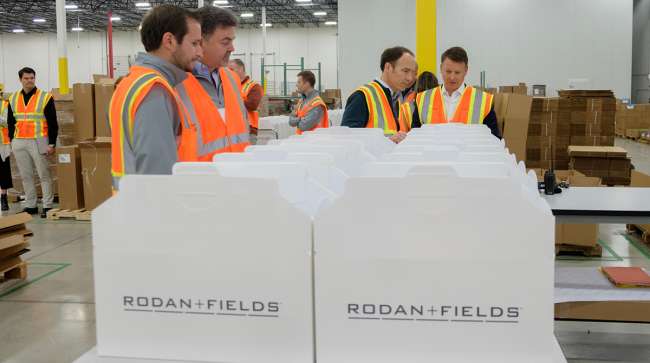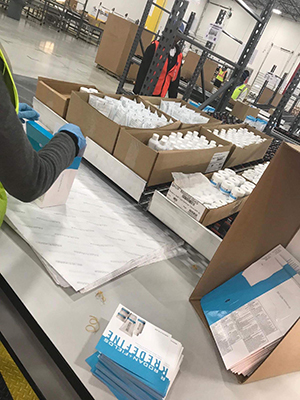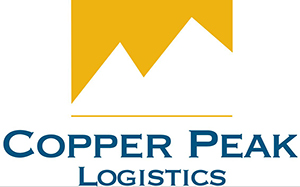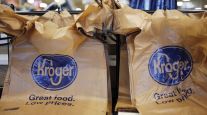Fulfillment Centers Promise Special Delivery for E-Commerce Subscriptions

E-commerce keeps growing as consumers enjoy the convenience of shopping online and receiving packages at their door. One segment driving that growth is subscription-based online merchants marketing consumer goods ranging from household items to specialized products.
Subscription businesses grew nine times faster than revenues in companies comprising the Standard & Poor’s 500 index and four times faster than U.S. retail sales for 15 consecutive quarters from 2012 through the third quarter of 2016, according to Zuora, a firm that tracks the business — bolstering logistics companies along the way.

Jindel
Logistics firms are drawn to subscriptions because the business offers simplified planning and staffing on the fulfillment side, generates predictable monthly revenue and doesn’t increase inventory as products typically are packed and shipped shortly after arrival, said Satish Jindel, president of SJ Consulting Group in Sewickley, Penn.
“It’s a great business because it’s predictable, repetitive and easy to handle,” Jindel said.
The subscription business brought headlines when Dollar Shave Club was purchased by Unilever for $1 billion in 2016. Dollar Shave built a mailing list of 3 million customers with promotional $1-a-month campaigns for its razors, and generated 2015 sales of $152 million.
Netflix used the e-commerce subscription model as it distributed DVDs via mail and toppled brick-and-mortar Blockbuster video stores, Jindel said.
“Subscriptions are a booming area now. It’s a convenience thing and people buy it as a gift,” said Bill Young, senior vice president of St. Louis-based Materialogic, a warehouse and distribution service provider.
“The challenge for fulfillment centers is to coordinate the mailing with the client. It could be a single piece or a multiple piece or multiple components,” Young said.
The largest group of e-commerce subscribers are 25 to 44 years old, have incomes from $50,000 to $100,000 and live in urban environments, according to The State of the Subscription Economy, 2018 by McKinsey & Co.
Logistics firms are jockeying for this rising business.
DHL Supply Chain is emphasizing its size and speed in fulfilling orders, much of it due to its highly automated 652,159-square-foot distribution center in Lockbourne, Ohio. DHL Supply Chain, a subsidiary of Deutsche Post DHL Group, ranks No. 4 on Transport Topics’ Top 50 List of the largest logistics companies in North America.

Rodan & Fields subscription boxes (DHL Supply Chain)
DHL Supply Chain last year began handling inbound and outbound logistics for all U.S. customer orders of cosmetics firm Rodan & Fields, a San Francisco-based skincare product line and social enterprise platform founded by two female dermatologists. It originally sold its cosmetics through department stores but in 2007 shifted to marketing online and thorough independent consultants.
Rodan & Fields chose DHL Supply Chain because it provides top service for a prestige brand with the capability of strategic growth over its five-year contract, Chief Supply and Service Officer Bryan Wayda said.
Rodan & Fields this year is shipping about 1 million boxes a month, a 20% growth rate from the 10 million boxes it shipped in 2017, Wayda said.
Much of the work that DHL provides is mechanized and automated, a necessity for a firm with a national consumer base such as Rodan & Fields, said Fred Takavitz, DHL senior vice president of retail.
Still, each box receives a personal touch, Wayda said, with components wrapped in tissue paper and DHL staff ensuring a sleek, uniform look for the kits.

In contrast, Copper Peak Logistics positions itself as a specialist handling the subscription business of 85 vineyards and wine merchants in California’s Napa Valley. Most subscribers signed up after a visit to a vineyard or through word-of-mouth. The fulfillment center provides “white glove” service with wine bottles literally dusted off and packed individually with the label centered and facing up. A note from the vineyard is placed atop the bottles, said Dave Dobrow, vice president of business development for American Canyon, Calif.-based Copper Peak.
“We emulate the experience the consumer had at the winery,” Dobrow said.
Packing and shipping wine is demanding because it’s a liquid, the bottles are breakable, a six-pack can weigh as much as 21 pounds and alcohol is a highly regulated product, Dobrow said.
One benefit of wine, however, is a much lower churn rate than most consumer products sold by subscription. A vineyard can determine its revenues on its subscription division as many as 36 months forward because consumers will stick with the brand as long as service and quality stays strong, Dobrow said.
The subscription segment looks to grow along with e-commerce. As Takavitz said, major retailers including Target Corp. are getting into game. That suggests lots of kits to pick and pack for fulfillment centers.




